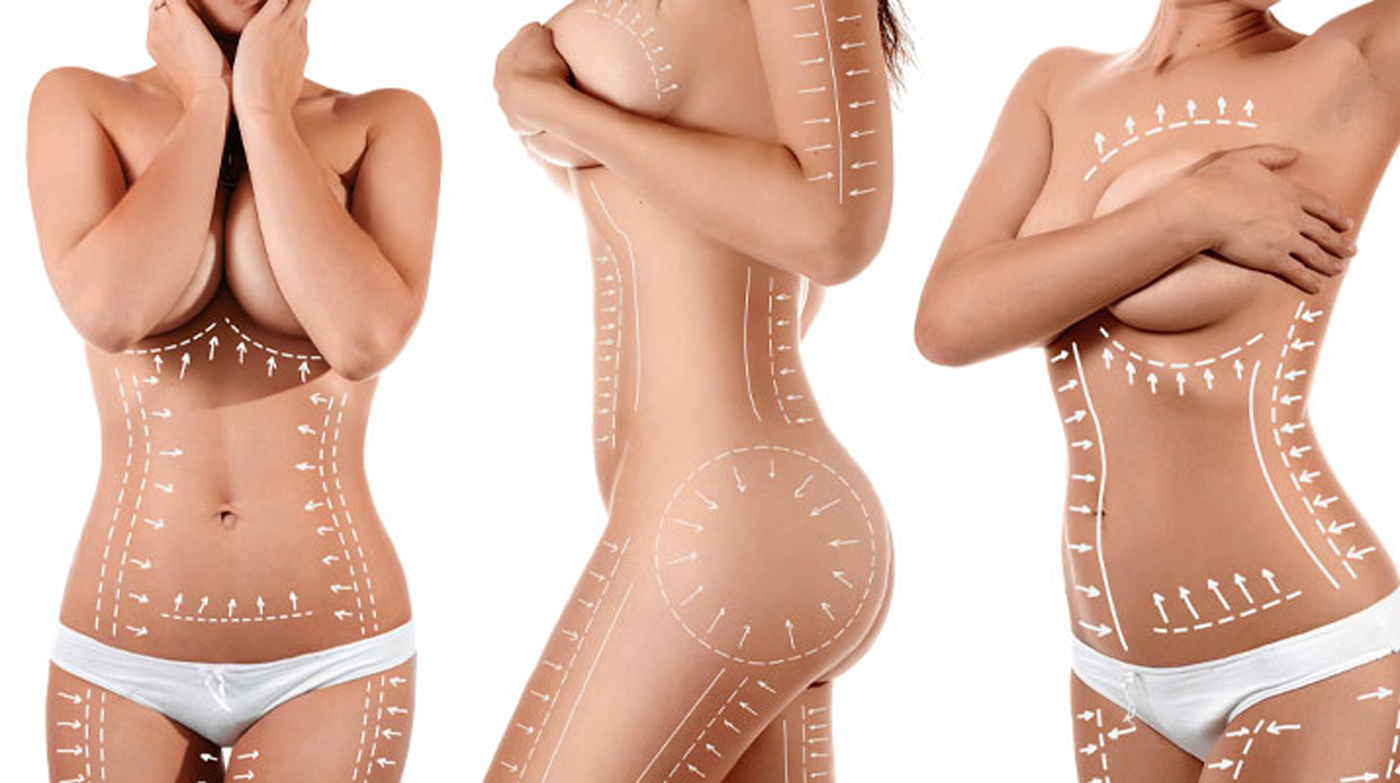
Professional Medical Plastic Surgery Services
- Tummy Tuck
- Liposuction
- Forehead Reduction
- Breast Lifting
- Face Lifting
- BBL ' Brazilian Butt Lifting
- Eyelid Aesthetics
- Arm and thigh lifting
- Neck Lifting
- Breast Augmentation
Plastic Surgery Types
- Tummy Tuck is a surgical procedure, usually performed when the skin loses elasticity for reasons such as childbirth, frequent weight gain, genetic predisposition, aging, and when the body begins to store fat and abdominal sagging.
- Brazilian butt lift surgery is a popular aesthetic procedure that involves fat transfer to help create more fullness in the hip area.
The Brazilian hip is a special fat transfer procedure that increases the size and shape of the hips without a hip replacement (silicone). With liposuction, excess fat is removed from the abdomen, waist or thighs, and then some of this fat is injected into the hips. With Brazilian hip surgery (BBL) or Brazilian hip surgery, we can improve the proportions of the entire lower body, remove fat from the patient’s “problem areas” and make the hip more prominent, while providing relative safety in excess and disproportionate areas.
- Liposuction is a surgical procedure that uses a suction technique to remove fat from specific areas of the body, such as the abdomen, hips, thighs, buttocks, arms or neck. Liposuction also shapes (contours) these areas. Other names for liposuction include lipoplasty and body contouring.
What is Lipo 360? Lipo 360 is an all-inclusive liposuction procedure that is used to contour and shape the midsection, 360 degrees around. The possible areas for treatment are the upper and lower abdominals, the flanks on both sides, and the lower and mid-back. Lipo 360 uses a vacuum to target and suction fat from specific areas in the midsection. Our surgeons use special techniques to accentuate your natural curves and create a dramatic yet natural-looking result. In some cases, the surgeon may also use a laser in addition to traditional liposuction to help melt fat and tighten the skin.

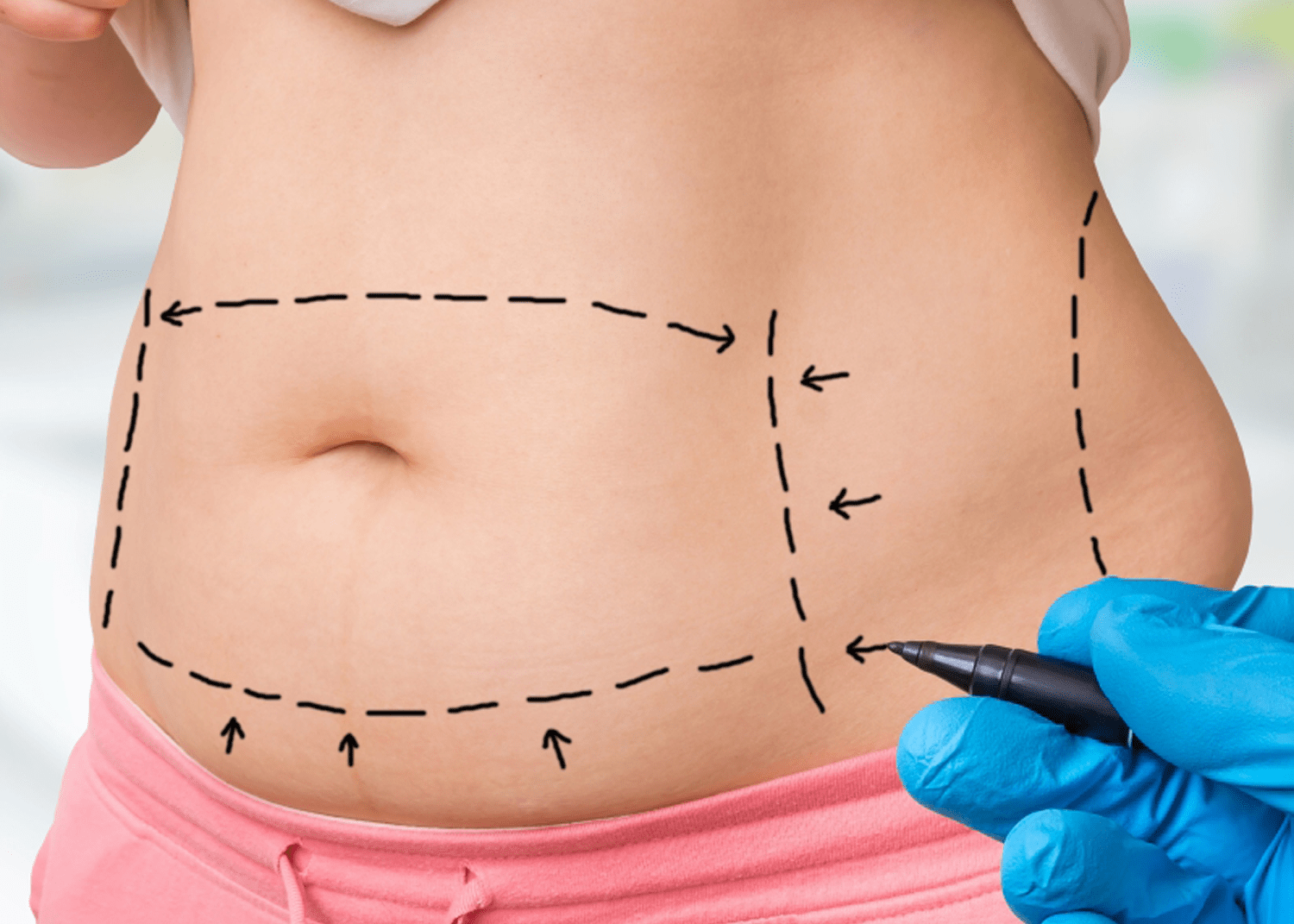
- Eyelid aesthetics The skin normally has an elastic structure. But as we age, its elasticity gradually decreases. As a result of the loss of elasticity that occurs on the skin of the face, excess skin is first collected on the eyelids. For this reason, the first signs of aging appear in the eyelids. Changes in the eyelids due to old age cause a person to look tired, dull and old. Some of the signs of aging seen in the lower and upper eyelids:
- Bagging and discoloration under the eyes.
- Upper eyelid miscarriage.
- Wrinkles and sagging on eyelid skin.
- Goose foot lines at the edges of the eyes.
- Forehead reduction also known as hairline lowering, is a cosmetic surgery that reduces the size of the forehead by moving the hairline approximately one to two inches forward. Your plastic surgeon may combine hairline lowering surgery with a hair transplant to thicken the hairline and conceal the surgical scar. When the forehead is very high or the skin is too taut, the doctor may use expanders to stretch the forehead skin.
- Breast lift ‘’mastopexy’’ The slightest sagging of the breast can make the woman unhappy. The erect and full breasts are the ones that’s always desired. Breast lift (mastopexy) is the process of bringing sagging breasts to an upright position depending on many factors, There are many factors that cause sagging. If breast sagging has developed as a result of factors such as weight gain, breastfeeding, skeletal conditions, aging and gravity, it is possible to recover this situation with breast lift surgery; As with all aesthetic surgeries, breast lift surgery is performed after the age of 18, except for exceptional cases.
BBL
What is Brazilian Butt lift (BBL) Aesthetics?
Brazilian butt lift surgery is a popular aesthetic procedure that involves fat transfer to help create more fullness in the hip area.
The Brazilian hip is a special fat transfer procedure that increases the size and shape of the hips without a hip replacement (silicone). With liposuction, excess fat is removed from the abdomen, waist or thighs, and then some of this fat is injected into the hips.
With Brazilian hip surgery (BBL) or Brazilian hip surgery, we can improve the proportions of the entire lower body, remove fat from the patient’s “problem areas” and make the hip more prominent, while providing relative safety in excess and disproportionate areas.
What are the benefits of Brazilian butt lift?
- Improves lower body curves.
- It adds fullness to the buttocks, reduces the fat in the hips.
- For those who have hip joint problems, the hips appear in the foreground, giving a younger aesthetic appearance.
- It helps restore balance between your upper and lower body.
How is Brazilian butt lift done?
Anesthesia in Brazilian butt lift surgery
We perform Brazilian butt lift surgery under general anesthesia.
Brazilian hip surgery or Brazilian hip surgery involves three basic steps:
- The first step in Brazilian butt lift is liposuction to remove fat from hips, waist, thighs, abdomen and/or other areas. For this purpose, we prefer to remove fat with vaser liposuction. Vaser liposuction is a method that works in a very respectable way with the principle of least damaging the adipose tissue, and it is a method that allows the fat to be removed from the body with sound waves without any damage and transferred to the necessary areas. Therefore, the survival rate of the fat taken and given to the hip is very high.
- Extracted oils are purified and prepared for transportation.
- The plastic surgeon makes “butt fat injection” to certain areas to enlarge, enlarge and give the desired shape.
Not all of the supplied oil will remain in the marked area, but some will melt. For this reason, many surgeons inject a little more fat than necessary, taking into account the share of this deterioration.
Differences between Brazilian hip surgery and silicone hip replacement
The biggest advantage of Brazilian hip surgery is that it increases the size of the hip without an implant (silicone hip replacement). Brazilian Butt lift Surgery (BBL) is a very natural-looking procedure with visible results.
However, if the person is very thin, there is not enough fat to be removed from the body and the only way to increase the size you want may be to replace the hip joint with silicone. Silicone prostheses may be a good option for some patients; it is important to understand the additional risks of having an implant (hip replacement), including capsular contracture and an increased risk of infection. Hip implants can look less natural compared to a custom Brazilian hip surgery (BBL).
Recovery after Brazilian butt lift surgery
Recovery after Brazilian butt lift surgery requires some special precautions. Pain after Brazilian hip surgery is usually minimal and can be easily controlled with painkillers. For about two weeks after Brazilian butt lift surgery, you are not allowed to sit or lie directly on your hips, it is recommended to lie face down.
After your butt lift augmentation surgery, you will need to stand for all activities except the toilet, lying on your face or side. When you’re ready, they’ll let you sit in a modified position, using a “bread” style seat or placing a pillow under your thighs to avoid straining your hips. After a Brazilian hip lift (BBL), normal sitting activity is usually allowed after 8 weeks.
According to your plastic surgeon’s instructions, you can resume light daily activities within a week after surgery and return to work within 10 to 14 days.


Forehead Reduction
What is Forehead Reduction?
Forehead reduction, also known as hairline lowering, is a cosmetic surgery that reduces the size of the forehead by moving the hairline approximately one to two inches forward. Your plastic surgeon may combine hairline lowering surgery with a hair transplant to thicken the hairline and conceal the surgical scar. When the forehead is very high or the skin is too taut, the doctor may use expanders to stretch the forehead skin.
Hairline Lowering Benefits :
hairline lowering procedure offers advantages to men and women who want to reposition their hairline closer to their eyebrows. Benefits may include:
- Reduction in the size of the forehead by ¾ of an inch or more
- Improved facial proportions
- Minimal scarring due to a well-concealed incision
- Short recovery with rapid results
- Improved self-esteem and self-confidence
- Natural-looking results
How is a Hairline Lowering procedure performed:
An incision is made right along the front of the hairline, then the hairline is brought forward, and the excess forehead skin is removed, with the incisions then sutured closed. The result: a fine line incision scar along the hairline which typically heals up to be barely if at all visible, and is designed so that hairs grow through it. This is a more complicated procedure than transplanting with hair grafts, but can be quite effective and produces results. Most patients’ recovery lasts two weeks, the sutures are removed at one week.Forehead reduction or hairline lowering surgery consists of advancing the entire scalp forward, effectively moving it to a new lower position. Most times in people who are naturally born with a higher hairline, there are adhesions during embryonic development that prevent the scalp from rotating to a lower position. This surgery is intended to correct the position of the scalp to where it would have been if the adhesions did not prevent the proper movement. Once the scalp is advanced to a lower position, the extra forehead skin is removed.
Eyelid Aesthetics
The skin normally has an elastic structure. But as we age, its elasticity gradually decreases. As a result of the loss of elasticity that occurs on the skin of the face, excess skin is first collected on the eyelids. For this reason, the first signs of aging appear in the eyelids. Changes in the eyelids due to old age cause a person to look tired, dull and old. Some of the signs of aging seen in the lower and upper eyelids:
- Bagging and discoloration under the eyes.
- Upper eyelid miscarriage.
- Wrinkles and sagging on eyelid skin.
- Goosefoot lines at the edges of the eyes.
The eyelids also show signs such as bagging, skin abundance, discoloration, relaxation, wrinkles. Factors such as exposure to sunlight, air pollution, irregular sleep, excessive smoking and alcohol use accelerate the aging process of the skin.
How is upper eyelid aesthetics performed?
Upper eyelid aesthetics or eyelid miscarriage surgery is briefly the process of cutting and removing excess skin and novelization tissue in the area. An incision is made from the fold line of the eyelid so that the surgical scar does not appear. It gives better cosmetic results when applied together with forehead lift and eyebrow lift operations.
How is lower eyelid aesthetics performed?
Fat pillows, which are located on the cheekbones when you are young, move downwards due to the effect of gravity along with the aging process. The aesthetic process for this fat pillow is endoscopically performed in the form of hanging the pillows in place. This application is performed before any procedure is performed on the lower eyelid.
The surgical incision is made just below the eyelashes. The skin is lifted and the oil packs are spread to the under eye cavity. Excess skin and muscle are cut and the procedure is completed. If the collapse under the eye continues after the operation, an under-eye oil injection may be required after recovery.
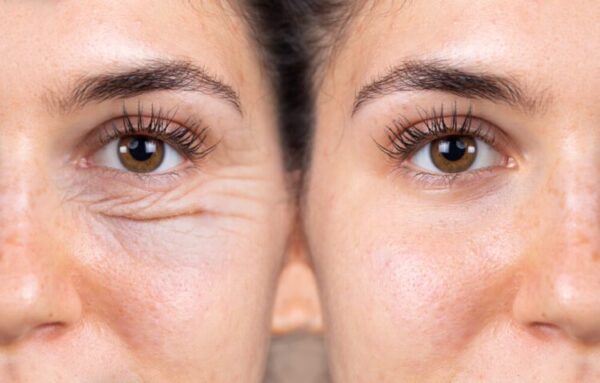
Eyelid Aesthetics
Tummy tuck is a surgical tummy tuck, usually performed when the skin loses elasticity for reasons such as childbirth, frequent weight gain, unhealthy and unstable lifestyle, genetic predisposition and aging, and when the body begins to store fat and abdominal sagging.
Tummy tuck surgery:
changes the shape of the abdomen by cutting excess skin and tightening muscles to get a flat abdomen, and eliminating the problem of abdominal protrusion and sagging.Tummy tuck:
is currently a common cosmetic procedure, but it is a major operation, so it requires the patient to be aware of all the facts before they are performed to apply for it .Types of tummy tucks:
- The types of a tummy tuck are divided into two main types:
- Full tummy tuck During a full tummy tuck, your doctor performs a long incision, extending from one side of the abdomen to the other, removing fat and excess skin, and restoring the skin, muscles, and tissues in the abdominal area depending on the patient’s condition.
- A full tummy tuck often involves changing the location of the navel, and you may need subcutaneous drainage tubes for a few days. The process usually takes one to five hours to complete.
Mini tummy tuck:
get rid of fat and tummy sagging on a smaller scale, and there is often no need to change the location of the navel. Mini-tummy tuck is usually performed for people with under navel tummy tuck, in the abdominal area from below.Preparations for tummy tuck operation :
A number of precautions should be taken before undergoing a tummy tuck that should be discussed with your surgeon, including.Physical health:
Make sure that this type of operation is appropriate for the patient according to his or her health condition. Medical examinations: Comprehensive patient examinations, such as blood tests, heart tests, liver and kidney function tests, should be performed.Medical history:
Having a specific history of illness, such as an old hernia in the patient, may affect your doctor’s decision whether or not to perform the procedure.Medications: Some medications or supplements that you regularly take can affect the functioning or complications of the procedure, so sometimes it is necessary to change or stop doses of medications before surgery.
Allergies to medications, the patient may be allergic to certain medications or may have side effects for each other, so you should discuss this issue with your doctor so that you can choose the right drug for the operation.
Smoking: Your doctor should tell you to stop smoking for at least two weeks before the procedure.
Drinking alcohol: Your doctor requires a patient wishing to have a tummy tuck to stop drinking alcohol for at least 48 hours before the procedure.
Steps of tummy tuck:
The procedure is usually performed under general anesthesia and lasts from one to five hours and includes: Complete abdominal sterilization.- By doing a horizontal incision near the pubic hairline penetrating all layers of the skin and below it and including muscles.
- Separate the skin and fatty tissue from the basic tissue.
- Strengthen your abdominal muscles with special stitches.
- Excess liposuction, as excess fatty tissue is removed. Cut the sagging skin Repositioning the navel, when performing a full abdominal incision,
- Close the wound, by stitching the skin and tissues in a homogeneous and symmetrical manner. Put the bandages. Use drainage tubes to help prevent fluid and blood from accumulating inside the wound and remove excess from it.
Post-tummy tuck surgery:
The patient is usually monitored for one day before being discharged from hospital, to ensure that bleeding is prevented or controlled as soon as possible.
Dressing is removed and changed, and the pain from the drug’s deactivation is controlled by providing the patient with painkillers.Contraindications to tummy tuck surgery:
Abdominal tightening is prohibited in some cases where you may experience severe complications, and Scars or severe burn marks in the upper abdomen.- The presence of chronic diseases such as heart disease, diabetes.
- A satisfactory history of strokes Severe obesity.
- Planning for pregnancy soon in women.
Many doctors also prefer not to perform a tummy tuck for patients who expect unrealistic and difficult outcomes despite surgery, due to the limited effectiveness of surgery in some cases of severe obesity.
Liposuction
What is liposuction?
Liposuction is a surgical procedure that uses a suction technique to remove fat from specific areas of the body, such as the abdomen, hips, thighs, buttocks, arms or neck. Liposuction also shapes (contours) these areas. Other names for liposuction include lipoplasty and body contouring.
What is Lipo 360?
Lipo 360 is an all-inclusive liposuction procedure that is used to contour and shape the midsection, 360 degrees around. The possible areas for treatment are the upper and lower abdominals, the flanks on both sides, and the lower and mid-back.
Lipo 360 uses a vacuum to target and suction fat from specific areas in the midsection. Our surgeons use special techniques to accentuate your natural curves and create a dramatic yet natural-looking result. In some cases, the surgeon may also use a laser in addition to traditional liposuction to help melt fat and tighten the skin.
The difference between traditional liposuction and 360 Lipo:
360 liposuction is similar to traditional liposuction except 360 lipo takes it a step further. Traditional liposuction is basically done on the abdomen, waist or the back. 360 lipo, on the other hand, is a more inclusive surgery. This procedure covers the whole midsection to accomplish a curvier shape from all angles. In other words, 360-degree liposuction targets various stubborn fat areas, particularly in the mid-section.
Benefits of 360 lipo:
- A tighter or flatter stomach
- Abdominal muscles are more visible
- Curvier buttocks
- Reduced love handles
- Eliminate undesirable fat deposits
- Elimination of loose or excess skin
Double Chin Liposuction:When it comes to skin aging, the neck is one of the first places to show age, and, for some people, fat is more likely to collect under the chin. This extra fat and loose skin can affect their overall jaw and facial profile.
Chin liposuction. This procedure removes excess fat from under the chin. This treatment reduces submental (under the chin) fat, working to redefine your jawline and dissolving your double chin without surgery.Double chin Fat Dissolving treatments are individually, tailored, injectable treatments that permanently destroy fat cells under the chin (submental fat), also called “double chin.” The treatment involves a number of small injections into the fat beneath your chin.

Breast Lift ‘’Mastopexy’’
The slightest sagging of the breast can make the woman unhappy. The erect and full breasts are the ones that’s always desired. Breast lift (mastopexy) is the process of bringing sagging breasts to an upright position depending on many factors, There are many factors that cause sagging. If breast sagging has developed as a result of factors such as weight gain, breastfeeding, skeletal conditions, aging and gravity, it is possible to recover this situation with breast lift surgery; As with all aesthetic surgeries, breast lift surgery is performed after the age of 18, except for exceptional cases.
- The slightest sagging of the breast can make the woman unhappy. The erect and full breasts are the ones that’s always desired. Breast lift (mastopexy) is the process of bringing sagging breasts to an upright position depending on many factors.
- There are many factors that cause sagging. If breast sagging has developed as a result of factors such as weight gain, breastfeeding, skeletal conditions, aging and gravity, it is possible to recover this situation with breast lift surgery.
- As with all aesthetic surgeries, breast lift surgery is performed after the age of 18, except for exceptional cases.
How do you decide on breast lift surgery and method?
- Breast lift operations usually take between 2 to 4 hours. The duration of the operation varies depending on the technique used.
- Breast lift surgeries are aesthetic surgeries performed under general anesthesia by plastic surgeons in operating room conditions.
- Before breast lift surgery, a detailed examination is performed in a standing position. The position of the nipple, the new position, and the amount of the mammary gland are measured.
- If breast sagging is at the first degree (mild) and there is a lack of volume, it may be possible to achieve acceptable long-term results with silicone prosthesis.
- If the sagging of the breast is at 2 and 3 degrees and the volume is sufficient, the desired result is obtained by performing a breast lift operation.
- If the sagging of the breast is excessive and at the same time the volume of the breast is insufficient, it is necessary to raise the breast and add volume by placing a silicone prosthesis during this process. This operation is called augmentation prosthesis (breast augmentation).
Does the surgery affect the mammary glands and breastfeeding?
Breast lift surgeries do not prevent breastfeeding. If the person has the potential to breastfeed, he can still give milk after the surgery. It should be known that only pregnancy and breastfeeding can cause changes in breast shape.
the recovery process after surgery:
- When you wake up after the procedure, you will find yourself in your room with your breasts taped.
- You can start taking liquid foods after 3-4 hours.
- Even if there is slight pain in the first night, it can be easily controlled with painkillers. Necessary painkillers, serum and antibiotic treatment will be planned appropriately.
- The patients are checked again the next day, their drains are removed and discharged (In some of our patients, we can keep the drains for 1-2 more days for their own safety).
- When you go home, we recommend that you eat plenty of liquid food, use the recommended antibiotics and painkillers appropriately, and dress tightly without removing your bra.
- In the first days, avoiding the activities that will use your arms a lot and not doing the movements that you feel pain will accelerate your recovery.
- You can take a bath 3-4 days after the procedure. You can return to your normal life in 5-7 days.
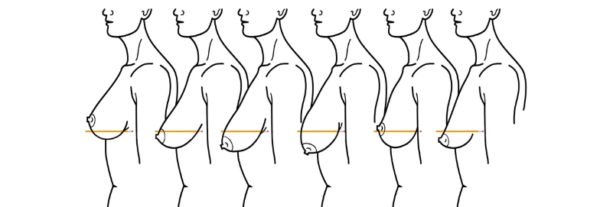
Meme Protezi
Breast Reconstruction Using Implants:
Mastectomy removes the entire breast, but the skin and nipple can sometimes be saved. Using a breast implant is one option for reconstructing the shape of your breast after mastectomy. It usually means having at least two operations.
- The first surgery places a tissue expander, a flat “water balloon” that will be gradually filled (expanded) during office visits until a desired size is reached.
- The second surgery replaces the tissue expander with a breast implant. Additional procedures could be done to reconstruct the nipple-areola area or revisions to improve the overall look.
What types of implants are used for breast reconstruction?
Several types of breast implants can be used to rebuild the breast. Most implants are made of a flexible silicone outer shell, and can contain saline or silicone gel. Other types of implants that have different shells and are filled with different materials are being studied, but are only available if you are participating in a clinical trial.
Saline breast implants:
Saline implants are filled with sterile (germ-free) salt water. These types of implants have been used the longest. A newer type, called a structured saline implant, is also filled with sterile salt water, but is made with an inner structure to help give the reconstructed breast a more natural look and feel.
Silicone breast implants:
Silicone gel implants tend to feel a bit more like natural breast tissue. All silicone breast implants in the US are made of cohesive gel which is a thicker type of silicone implant. Form-stable implants, the thickest ones, are sometimes called gummy bear or highly cohesive breast implants. The name means that they keep their shape even if the shell is cut or broken. They are firmer than regular implants and might be less likely to rupture (break), although this still might happen.
There are different shapes and sizes of saline and silicone implants and they can have either a smooth or textured (rough) surface. Any type of implant might need to be replaced at some point if it leaks or ruptures.
How are implant procedures done?
- Immediate breast reconstruction:
Immediate breast reconstruction starts at the same time as the mastectomy. It is usually completed in stages and at least two operations are needed. The first stage is during the mastectomy, when the plastic surgeon places a tissue expander (“water balloon”) under the skin or muscle on your chest. Mesh is sometimes used to hold the expander in place, much like a hammock or sling. The water balloon starts off flat and is then expanded during office visits until the desired size is reached. The second stage removes the tissue expander and replaces it with a permanent breast implant. The timing of the second stage (implant placement) can be planned and safely postponed if needed, because of cancer treatments such as chemotherapy. If necessary, additional procedures could recreate the nipple-areola area or could be revisions to improve the overall look.
A small number of women might be candidates for a direct to implant breast reconstruction. This means the breast implant is put in place at the same time as the mastectomy. Women most often suitable for this type of reconstruction are young, have small breasts, and have no health problems. In this situation, a tissue expander is not used. After the surgeon removes the breast tissue, a plastic surgeon puts in a breast implant. The implant can be put under the skin or muscle on your chest. Mesh is sometimes used to hold the implant in place, much like a hammock or sling.
Delayed breast reconstruction:
Delayed breast reconstruction means that rebuilding happens later, often months, after the mastectomy. The reconstruction starts when the chest is flat. A tissue expander is placed under the chest wall muscle or skin. This will help to make a pocket to put the implant into at a later date. The tissue expander is a balloon-like sac that starts off flat and is slowly expanded to the desired size to allow the skin to stretch. Once the skin over the breast area has stretched enough, a second surgery is done to remove the expander and put in the permanent implant.
If radiation therapy after mastectomy is part of your cancer treatment, you might not be a good candidate for implant reconstruction and should discuss other reconstruction options, such as tissue flaps , with your plastic surgeon.
Tissue expanders are filled by the surgeon injecting a salt-water solution through a tiny valve under the skin at regular intervals (every 1, 2, or 3 weeks) to fill the expander over several months.
You might choose to delay breast reconstruction if:
- You don’t want to think about reconstruction while coping with the cancer treatment. If this is the case, you might choose to wait until after your breast cancer surgery to decide about reconstruction.
- You have other health problems. Your surgeon might suggest you wait for one reason or another, especially if you smoke or have other health problems. It’s best to quit smoking at least 2 months before reconstructive surgery to allow for better healing.
- You need radiation therapy. Many doctors recommend that women not have immediate reconstruction if they will need radiation treatments after surgery. Radiation can cause problems after surgery such as delayed healing and scarring, and can lower the chances of success. Flap reconstruction surgery (using other body tissues to create the new breast) is often delayed until after radiation.
Your surgical team will discuss your best reconstruction options, taking into account your medical history, body shape, cancer treatment, and personal goals.
Tissue support for implants:
Some plastic surgeons choose to use donated human skin or pig skin to support tissue expanders or implants. These are known as acellular dermal matrix (ADM) products because they have had the human or pig cells removed. This reduces any risk that they carry diseases or that the woman’s body will reject them. They are mainly made of collagen so the person’s own connective tissue can grow over the framework to extend and support natural tissues and help them grow and heal. ADMs can help support and position the tissue expander or implant.
The use of acellular matrix products in breast surgery first started in the early 2000s. Studies that look at outcomes are still being done, but they have been promising overall. This type of tissue is not used by every plastic surgeon, but it is becoming more widely available. Talk with your doctor about whether these materials will be used in your reconstruction and about their benefits and risks.
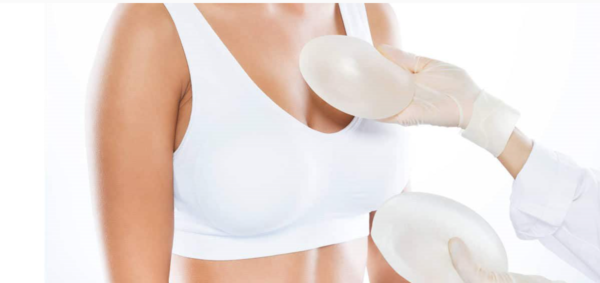
Face Lifting
Face lifting surgery can be performed using multiple methods. It is the name of the surgery performed to minimize the negative effects of aging by different methods. The face lifting operations performed in both genders are aimed at making the person look younger and more vigorous.
Face lift surgery is the surgical procedure to remove sagging and wrinkles of the skin in this area. These are the operations that are intended to make the face look younger, more beautiful and energetic. In general, the effects of aging in the three regions as the face, neck and jaw are targeted. The success of the operation depends on the patient’s age, skin characteristics etc. personal characteristics and experience of the operator surgeon that performs the surgery. If the patient strictly adheres to the doctor’s recommendations, s/he will have a new facial appearance within a few months.Face Lifting Surgery :
Face lifting is a highly detailed and personalized plastic surgery. Which areas of the patient will be operated and the extent of this operation are planned carefully with the patient. Cheeks, eye circles, eyebrows, forehead, neck, jaw and nose should be considered as a whole and the most ideal looking face should be evaluated on this whole.
In the surgery, which will have a very different context based on the patient, the most important point is to make the incisions from the most accurate points and hide them by turning into skin color. Therefore, incisions are made from the places where the forehead and the hair follicles meet, under the ears and under the chin.
Surgery is performed under general anesthesia. Depending on the operation area(s) on the face, it has a duration that varies 2 to 3 hours. It is not a painful operation; the pain can be resolved with painkillers. The patient may be discharged on the same day, even in the most extensive face lifting operations. In a few weeks, the face will have a new look.Before Face Lifting Operation:
First of all, the patient’s history should be evaluated well. If any, previous long-term treatment or chronic diseases should be taken into consideration. If there are no obstacles for surgery, the doctor and the patient should make a detailed planning of where and the extent of operation and the day of surgery should be decided.
Blood-thinning drugs and foods should be discontinued 10 days before all surgical operations. Smoking and alcohol consumption should be terminated at least 2 weeks beforehand. Depending on the nature of the operation, the patient may stay in the hospital one day. Your doctor will inform you in advance. In this case it is useful to have a companion with you.After Face Lifting Surgery:
After the surgery, the face is bandaged with eyes and nose exposed. Swelling, bruising, mild drowsiness and skin tensions may appear and are natural. A neck brace is worn by the patient to minimize swelling and bruises. At the end of the first seven days, the swelling will begin to go down. After removing your face bandage, the sutures will be removed. In this process, you can do your daily work that is not exhausting. It will be useful to wear a neck brace while sleeping. 15 days after the operation, the bruises gradually heal and the patient can easily return to his/her daily life. The loss of sense on the face may persist for several weeks, and it may take several months to completely disappear. Direct sunlight must be avoided in the first 6 months. Solarium must be avoided. Even if this changes from one patient to the next, after 12 months your new appearance is fully established. Apart from all this information, it is very important that you follow your doctor’s specific recommendations.
